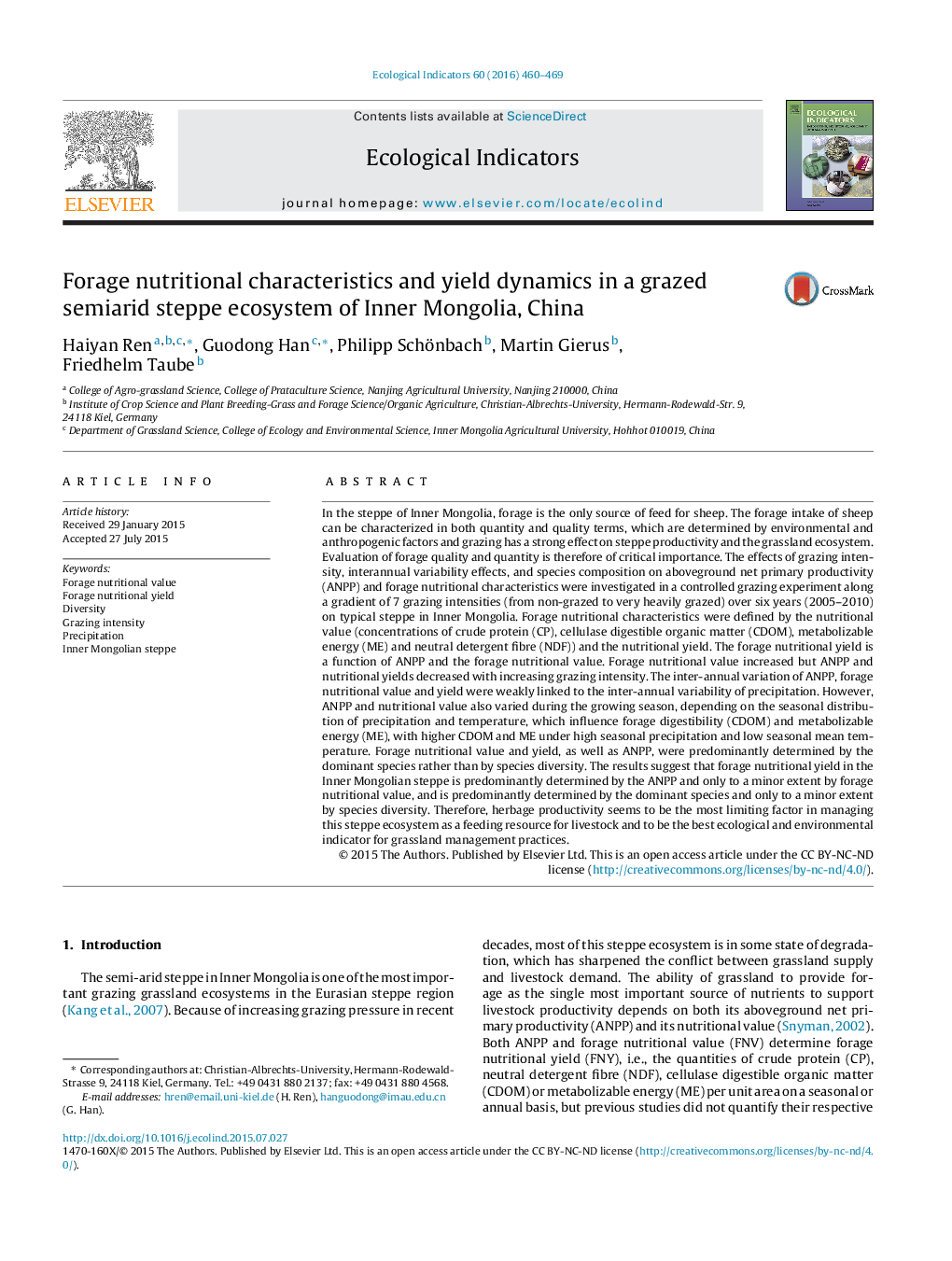| Article ID | Journal | Published Year | Pages | File Type |
|---|---|---|---|---|
| 6294084 | Ecological Indicators | 2016 | 10 Pages |
Abstract
In the steppe of Inner Mongolia, forage is the only source of feed for sheep. The forage intake of sheep can be characterized in both quantity and quality terms, which are determined by environmental and anthropogenic factors and grazing has a strong effect on steppe productivity and the grassland ecosystem. Evaluation of forage quality and quantity is therefore of critical importance. The effects of grazing intensity, interannual variability effects, and species composition on aboveground net primary productivity (ANPP) and forage nutritional characteristics were investigated in a controlled grazing experiment along a gradient of 7 grazing intensities (from non-grazed to very heavily grazed) over six years (2005-2010) on typical steppe in Inner Mongolia. Forage nutritional characteristics were defined by the nutritional value (concentrations of crude protein (CP), cellulase digestible organic matter (CDOM), metabolizable energy (ME) and neutral detergent fibre (NDF)) and the nutritional yield. The forage nutritional yield is a function of ANPP and the forage nutritional value. Forage nutritional value increased but ANPP and nutritional yields decreased with increasing grazing intensity. The inter-annual variation of ANPP, forage nutritional value and yield were weakly linked to the inter-annual variability of precipitation. However, ANPP and nutritional value also varied during the growing season, depending on the seasonal distribution of precipitation and temperature, which influence forage digestibility (CDOM) and metabolizable energy (ME), with higher CDOM and ME under high seasonal precipitation and low seasonal mean temperature. Forage nutritional value and yield, as well as ANPP, were predominantly determined by the dominant species rather than by species diversity. The results suggest that forage nutritional yield in the Inner Mongolian steppe is predominantly determined by the ANPP and only to a minor extent by forage nutritional value, and is predominantly determined by the dominant species and only to a minor extent by species diversity. Therefore, herbage productivity seems to be the most limiting factor in managing this steppe ecosystem as a feeding resource for livestock and to be the best ecological and environmental indicator for grassland management practices.
Related Topics
Life Sciences
Agricultural and Biological Sciences
Ecology, Evolution, Behavior and Systematics
Authors
Haiyan Ren, Guodong Han, Philipp Schönbach, Martin Gierus, Friedhelm Taube,
